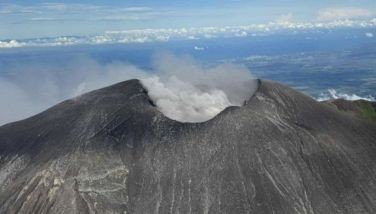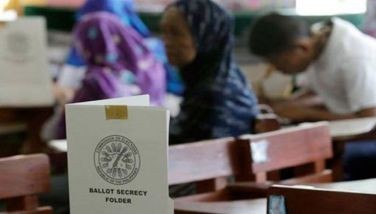WHO to launch first Web-based system against fake drugs
May 4, 2005 | 12:00am
The World Health Organization (WHO) will turn to the Internet to strengthen its global fight against counterfeit drugs, a business estimated to generate more than $35 billion in sales a year that has become a serious problem for developing countries.
The world’s first web-based system for tracking the activities of drug counterfeiters, dubbed the Rapid Alert System (RAS), will be launched this week.
"We hope that RAS will considerably strengthen our fight against counterfeiters. Rapid communication and efficient exchange of information are crucial to combating counterfeiting," said Dr. Budiono Santoso, WHO’s Regional Adviser in Pharmaceuticals for the Western Pacific Region.
The RAS network was designed to transmit information on the distribution of fake medicines to authorities so that counter measures can be implemented fast.
National health authorities and other partner agencies will be linked to the tracking system, where counterfeiting cases can be reported electronically.
Alternatively, reports can be submitted by email or fax and other means to the secretariat, which will immediately incorporate them into the system.
WHO estimates that between six to 10 percent of medicines in the global market are counterfeit products, with sales topping $35 billion a year. The problem is most serious in developing countries, including the Mekong region in Southeast Asia.
The global body noted that counterfeit drugs not only cause prolonged illness or death but also lead to wastage of health care resources.
A 2001 study showed that more than a third of anti-malaria artesunate products in Cambodia, the Lao People’s Democratic Republic, Myanmar, Thailand and Vietnam contained no active ingredients.
A follow-up study last year revealed that the situation has worsened, with 99 of 188 artesunate product samples found to be counterfeit.
In the Philippines, the Department of Health has estimated that 10 percent of the P95-billion pharmaceutical industry products are counterfeit.
The global body defines counterfeit drugs as those that are deliberately and fraudulently mislabeled with respect to their identity or source. These products could contain one or more of the following: correct ingredients, wrong ingredients, inactive ingredients, insufficient active ingredients and fake packaging.
Both branded and generic products can be counterfeited.
To effectively combat drug counterfeiting, there is a need for collaboration and coordination among stakeholders in each country, member countries and partner organizations.
The world’s first web-based system for tracking the activities of drug counterfeiters, dubbed the Rapid Alert System (RAS), will be launched this week.
"We hope that RAS will considerably strengthen our fight against counterfeiters. Rapid communication and efficient exchange of information are crucial to combating counterfeiting," said Dr. Budiono Santoso, WHO’s Regional Adviser in Pharmaceuticals for the Western Pacific Region.
The RAS network was designed to transmit information on the distribution of fake medicines to authorities so that counter measures can be implemented fast.
National health authorities and other partner agencies will be linked to the tracking system, where counterfeiting cases can be reported electronically.
Alternatively, reports can be submitted by email or fax and other means to the secretariat, which will immediately incorporate them into the system.
WHO estimates that between six to 10 percent of medicines in the global market are counterfeit products, with sales topping $35 billion a year. The problem is most serious in developing countries, including the Mekong region in Southeast Asia.
The global body noted that counterfeit drugs not only cause prolonged illness or death but also lead to wastage of health care resources.
A 2001 study showed that more than a third of anti-malaria artesunate products in Cambodia, the Lao People’s Democratic Republic, Myanmar, Thailand and Vietnam contained no active ingredients.
A follow-up study last year revealed that the situation has worsened, with 99 of 188 artesunate product samples found to be counterfeit.
In the Philippines, the Department of Health has estimated that 10 percent of the P95-billion pharmaceutical industry products are counterfeit.
The global body defines counterfeit drugs as those that are deliberately and fraudulently mislabeled with respect to their identity or source. These products could contain one or more of the following: correct ingredients, wrong ingredients, inactive ingredients, insufficient active ingredients and fake packaging.
Both branded and generic products can be counterfeited.
To effectively combat drug counterfeiting, there is a need for collaboration and coordination among stakeholders in each country, member countries and partner organizations.
BrandSpace Articles
<
>
- Latest
- Trending
Trending
Latest
Trending
Latest
Recommended
































